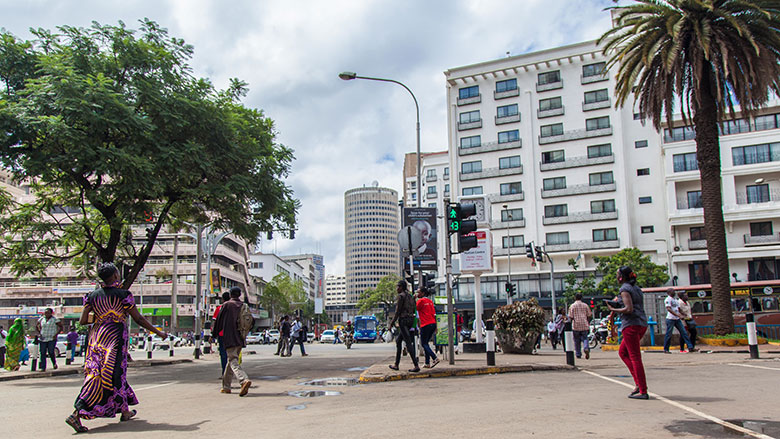NAIROBI, September 18, 2018 – In 2005, Kenya’s government was prepared to rebuild the country’s dilapidated roads after decades of neglect. At that time, there was limited data on the size of the country’s road network. The World Bank stepped in to support the extensive roads rehabilitation project, investing $1 billion in International Development Association (IDA) financing over 13 years.
Today, 162,000 kilometres of Kenya’s roads are documented, and the country is currently working on recording and updating the condition of the existing network. Josphat Sasia, World Bank Lead Transport Specialist in Nairobi, credits policy, legal and institutional reforms as the main drivers of the project’s success. The reforms included assigning categories of roads to specific entities for management and accountability.
Thirteen years is a short period to assess the success of a complex transport project, said Sasia, and even more so, the rehabilitation of dilapidated physical infrastructure.
“When the World Bank got involved, there were multiple government agencies in charge of planning and executing on the transport portfolio,” said Sasia.
This reality triggered a major institutional and policy reforms overhaul dating back to 2005 which led to creation of three transport organizations in 2007: the Kenya National Highways Authority (KeNHA), the Kenya Urban Roads Authority (Kura) and the Kenya Rural Roads Authority (KeRRA). The reforms enabled the institutions to facilitate and focus on rehabilitation of the country’s highways, urban and rural roads.
Taking on these reforms wasn’t easy, Sasia said. The process involved shifting power outside of the Ministry of Roads, which previously handled all the classification and rehabilitation of all roads. This minimized overall and management and accountability. The leadership at the Ministry of Roads supported the changes, establishing an inter-governmental task force to the steer the process.
Developing a road policy to speed up rehabilitation works was one of the first reforms on the agenda. The government’s Sessional Paper of 2006 on the development and management of roads attributed road conditions to years of inadequate financing, negligence and maintenance, said James Theuri, an engineer at the Ministry of Transport, Infrastructure, Housing and Urban Development. The paper included a framework that aimed to bring every Kenyan within two kilometres of an all-weather road.
Theuri, who coordinates projects funded by the Bank and other development organizations, said previous studies found that the financial and administrative needs of the road network had increased over the years and had outgrown the 2006 framework. “That is why KeNHA, KURA and KeRRA were created, to bring ownership and clarity into the sector and assign responsibility,” Theuri said.
With a new transport policy and organizations, policy and execution functions were separated. Policy formation remains with the ministry, while project execution went to the organizations, creating a more streamlined process that has made service delivery easier and faster.
For oversight and regulation of the new agencies and the construction industry, the National Construction Authority (NCA) was created. The technical side of construction, including the engineering profession and practice, the Engineers Board of Kenya (EBK) was created. The EBK also created a clear code of conduct and ethical standards for the construction sector, ensuring quality assurance within the industry.
Regulation of road transport service provision went to the National Transport Safety Authority (NTSA), which targeted matatus (mini-buses), traditionally regarded as a road safety hazard.
The backlog of dilapidated roads repairs required a long-term investment plan with clear priorities. Guided by the 2006 policy and with Bank support, the government prepared the initial 15-year investment plan based on the new criteria.
The planned repairs called for huge financial outlays, and following discussions with the government, the domestic economy was roped in to mobilize resources. This led to the establishment of the Road Maintenance Levy Fund (RMLF) and the Kenya Roads Board (KRB), which manages the fund. Thee RMLF currently generates $600 million yearly. “Not little, considering that a bank loan of $600 million could be implemented over eight years,” said Sasia.
In many countries, multilateral agencies advise governments on policy and regulatory reforms, and agencies are created, then left on their own. In Kenya, the Bank continued to provide support beyond their inauguration. “We supported the government during the implementation of the reforms through continuous engagement and in various programs,” said Rajesh Rohatgi, World Bank Senior Transport Specialist. Kenya now has more efficient and accountable bodies with clearly defined mandates.
The work to repair and maintain Kenya’s road network continues. In 2009, the Bank financed a study to take an inventory and condition of Kenya’s documented roads while work is ongoing to determine the size of other road categories, including community roads with corridors of less than nine meters.
Over the next decade, Kenya’s massive investment in its roads will be guided by the Big 4 initiative, which highlights manufacturing and affordable housing as instrumental to attaining economic development goals by 2030. The success of both sectors will depend on an efficient and extensive road network that connects Kenyans across the country and with its neighbors. The government is leveraging Public Private Partnerships and concessional financing such as IDA to continue upgrading Kenya’s road network in line with the Vision 2030 development goals.

